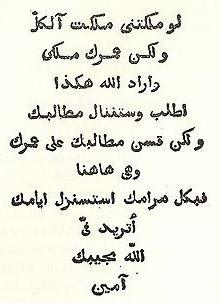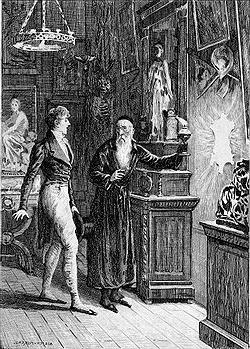Honore de Balzac conceived and almost brought to life a daring plan: to write a cycle of novels and short stories in which a literary model of modern France would be created. He called the main creation of his life "Human Comedy", by analogy with the "Divine Comedy" by Dante Alighieri. The writer hoped that it would become as significant for the 19th century as the creation of the great Florentine for the Middle Ages. The anthology was supposed to contain 144 works related by transitional characters, a single style and perspective. However, Balzac managed to write only 96 of them. "Shagreen skin" (1831) is also included in this cycle and is located in the section "Philosophical studies".

This novel examines the conflict of the individual with society, which was the focus of the then literature (for example, Stendhal in "Red and Black"). However, the philosophy of this book and the multiplicity of meanings make it look like a parable with a deep meaning. “Shagreen skin”, the summary of which boils down to the truly Buddhist conclusion that desires kill, carries a life-affirming message: happiness is possible without a lifesaver, it can be found in selfless love and the desire to give, not to take and own.
The main character of the work is Rafael de Valantin, impoverished the educated aristocrat. For several years he has been dragging the existence of a poor man in the attic of a small hotel, not suspecting that the mistress's daughter, Polina, is in love with him. He himself became interested in a brilliant socialite - Countess Theodora, and for her sake he began to play in a casino, insanely spend money on gifts, after which only honor was left for his honor - suicide. So begins the novel "Shagreen Skin".

In the absence of the best ideas, the hero enters an antique shop where he acquires a piece of donkey skin, on the reverse side of which is inscribed in a certain oriental language: “When you take possession of me, I will take possession of you. I will fulfill your desires, but with each of them I will decrease - just like your life. Therefore, measure your desires. ” Not believing the validity of what was written, Raphael makes up a binge, and immediately meets his friends who invite him to drink. He draws ink on the contours of his talisman and intends to get enormous wealth. The next morning, the solicitor informed him that his uncle had died in India and bequeathed to his young de Valantin all his considerable savings. Rafael reaches into his pocket and takes out a gift from an antique dealer. Shagreen skin shrunk in size!
The subsequent story unfolds rapidly: believing in the effectiveness of the talisman, Raphael tries to abandon desires. But an accidentally dropped phrase of politeness “I wish you happiness”, an attraction to a beloved woman and a thirst for victory in a duel quickly nullify his days.
Shagreen skin is reduced in size, no physical experiments can stop this process. In the end, the hero dies in his magnificent house in the arms of Polina, who loves him without any miracles and talismans.
It seems that the whole work is a parable about soul-burning desires, the symbol of which is shagreen leather. An analysis of the style of the novel nevertheless shows that Balzac works in a narrative style and is based on the romanticism of his predecessors, writers of the early 19th century, using very realistic details, coupled with a colorful and dynamic composition. The hero describes the story of a kind of ruin in such a way that every person who knows the economic and political realities of France at the end of the reign of Louis XVI will not doubt the veracity of his words. The sincerity of this novel, despite the fantastic plot, puts it among the best works of classical realism.